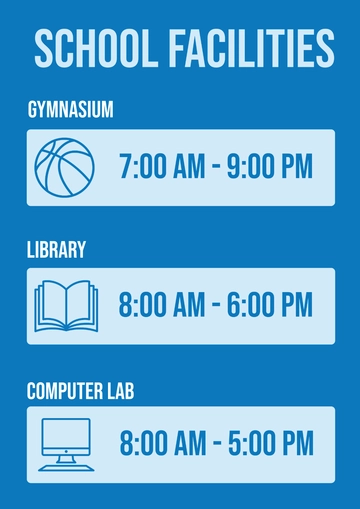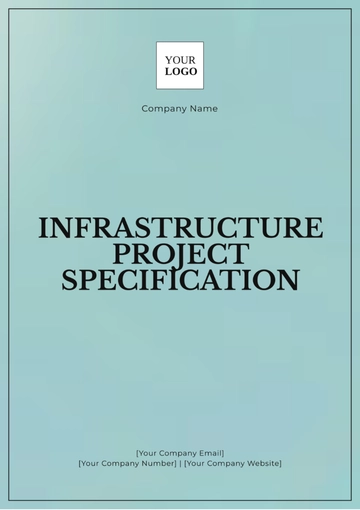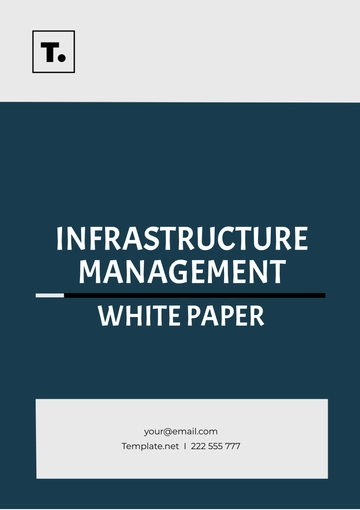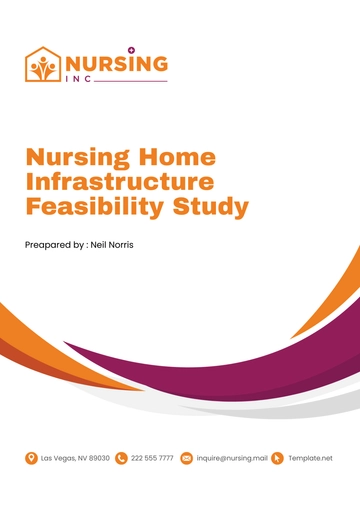Free Infrastructure Management White Paper
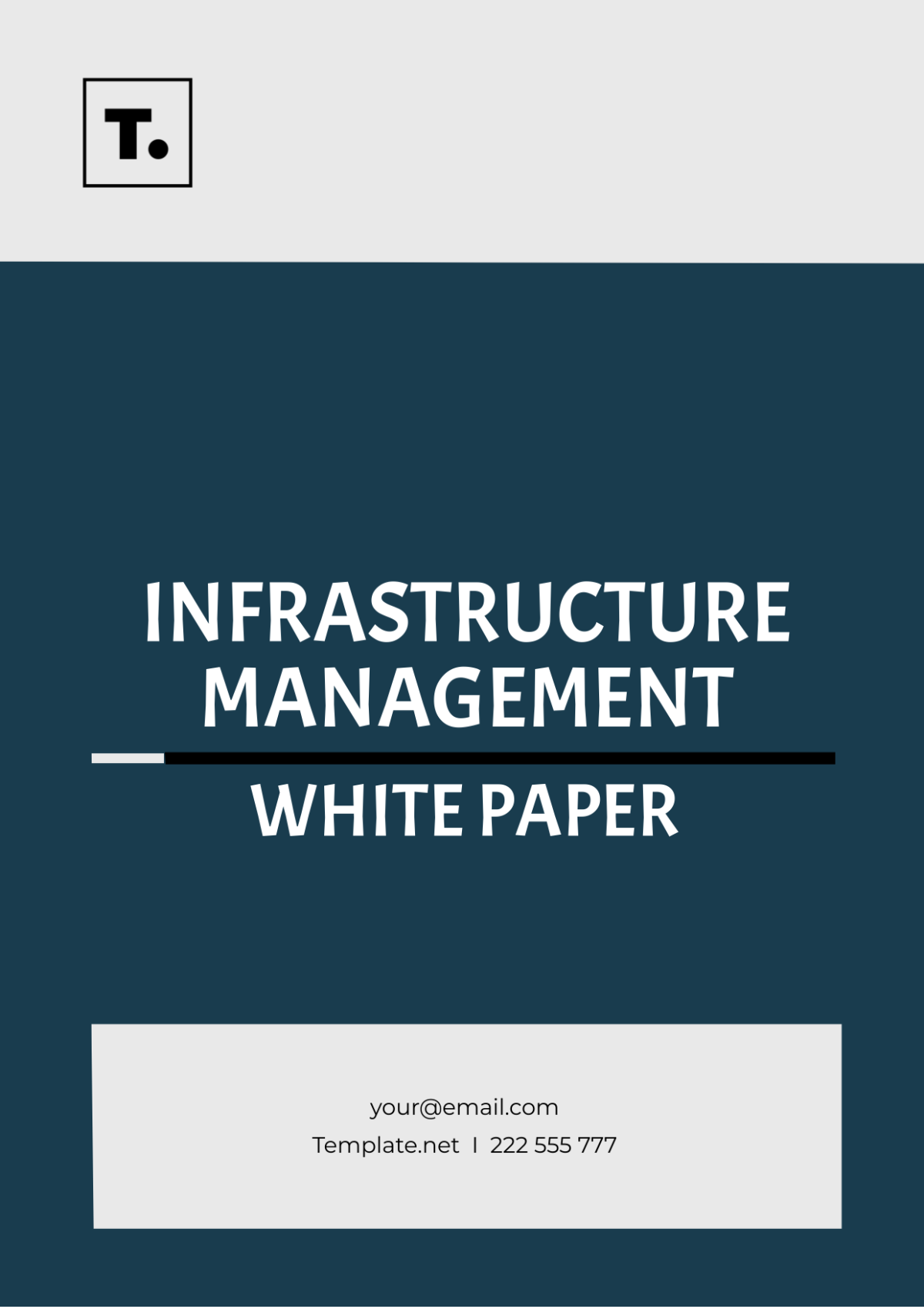
Optimizing Urban Transportation Systems
Authored by: [YOUR NAME]
Company: [YOUR COMPANY NAME]
Department: [YOUR DEPARTMENT]
Date: [DATE]
1. Executive Summary
In today's rapidly growing urban landscapes, the optimization of transportation infrastructure stands as a critical challenge. This white paper delves into strategies aimed at enhancing urban transportation systems through the integration of smart technologies, improvement of public transit networks, and promotion of sustainable mobility options. Addressing prevalent issues such as congestion and environmental impact, this document advocates for public-private partnerships and data-driven decision-making to achieve efficient and equitable urban mobility solutions.
2. Introduction
The management of urban transportation infrastructure requires a holistic approach to address the multifaceted challenges faced by modern cities. This white paper investigates key strategies and recommendations for optimizing urban transportation systems, ensuring they align with contemporary urban development goals.
3. Current Challenges

Urban transportation systems encounter several pressing challenges. Chief among these is traffic congestion, inadequate public transit coverage, and adverse environmental impacts stemming from vehicular emissions.
4. Strategies for Improvement
Integration of Smart Technologies: Leveraging IoT (Internet of Things) and AI (Artificial Intelligence) to optimize traffic flow, reduce congestion, and enhance safety.
Enhancing Public Transit Networks: Expanding coverage, improving accessibility, and enhancing the reliability of public transportation options.
Promoting Sustainable Mobility Options: Encouraging the use of eco-friendly modes of transport such as cycling, walking, and electric vehicles.
5. Infrastructure Analysis
Understanding the existing urban infrastructure is fundamental to devising effective strategies for transportation optimization. An infrastructure analysis involves a detailed examination of the current state of transportation systems, identifying strengths, weaknesses, opportunities, and threats. This section outlines key aspects of infrastructure analysis crucial for informing improvement initiatives:
Transportation Network Evaluation:
Assess the layout, connectivity, and capacity of roadways, railways, and waterways within the urban area.
Identify bottlenecks, intersections, and areas of congestion that hinder efficient movement of goods and people.
Percentage of Infrastructure Analysis: 20%
Public Transit Assessment:
Evaluate the coverage, frequency, and reliability of existing public transit services (e.g., buses, subways, trams).
Analyze ridership patterns and service gaps to determine areas requiring enhancement or expansion.
Percentage of Infrastructure Analysis: 15%
Technological Infrastructure Review:
Examine the integration of smart technologies (e.g., traffic sensors, real-time data systems) within the transportation network.
Evaluate the effectiveness of current technologies in optimizing traffic flow and improving transportation management.
Percentage of Infrastructure Analysis: 15%
Environmental Impact Assessment:
Assess the environmental footprint of transportation systems, including air quality impacts from vehicular emissions.
Identify opportunities for implementing sustainable transportation options to mitigate environmental degradation.
Percentage of Infrastructure Analysis: 15%
Infrastructure Utilization and Efficiency:
Analyze the utilization rates of existing infrastructure assets (e.g., bridges, tunnels) and assess their efficiency in meeting current demands.
Identify potential upgrades or maintenance requirements to enhance operational efficiency and safety.
Percentage of Infrastructure Analysis: 20%
Stakeholder Engagement and Feedback:
Gather feedback from stakeholders, including commuters, businesses, and local authorities, regarding their experiences and challenges related to urban transportation.
Incorporate qualitative insights to supplement quantitative data for a comprehensive infrastructure analysis.
Percentage of Infrastructure Analysis: 15%
6. Data Collection and Analysis
Utilize a combination of traffic surveys, GIS (Geographic Information System) mapping, and remote sensing technologies to gather relevant data.
Employ advanced data analytics techniques to derive actionable insights and support evidence-based decision-making.
7. Infrastructure Gap Analysis:
Conduct a gap analysis to identify discrepancies between current infrastructure capabilities and future urban development needs.
Prioritize areas requiring immediate attention and allocate resources accordingly to bridge infrastructure gaps effectively.
8. Recommendations
Public-Private Partnerships (PPPs): Foster collaborations between governmental bodies and private enterprises to fund and implement transportation projects efficiently.
Data-Driven Decision Making: Utilize comprehensive data analytics to inform policy decisions, optimize resource allocation, and enhance the effectiveness of transportation initiatives.
9. Conclusion
In conclusion, the optimization of urban transportation systems is imperative for the sustainable development of cities. By embracing innovative technologies, expanding public transit networks, and prioritizing sustainability, urban centers can overcome current challenges and pave the way for efficient, equitable, and environmentally friendly mobility solutions.
10. References
World Bank. (2019). "Urban Transport." Retrieved from https://www.worldbank.org/en/topic/transport/brief/urban-transport.
United Nations Department of Economic and Social Affairs. (2018). "Sustainable Development Goals: Goal 11 - Sustainable Cities and Communities." Retrieved from https://sdgs.un.org/goals/goal11.
11. About the Author
[YOUR COMPANY NAME] is a renowned industry leader with extensive expertise in infrastructure development and management. With over 10 years of experience, we specialize in delivering innovative solutions that enhance urban transportation systems and promote sustainable urban development. Key highlights of our firm's expertise include:
Infrastructure Design and Construction: We have successfully executed numerous infrastructure projects, including roads, bridges, and public transit facilities, adhering to the highest standards of quality and safety.
Smart Technology Integration: Our firm is at the forefront of integrating smart technologies into transportation infrastructure, leveraging IoT (Internet of Things) and data analytics to optimize traffic management and enhance user experience.
Sustainability Initiatives: We prioritize environmental sustainability in all our projects, promoting the use of eco-friendly materials and advocating for sustainable mobility options such as electric vehicles and cycling infrastructure.
Public-Private Partnerships (PPPs): We have a proven track record of collaborating with public and private stakeholders to deliver successful infrastructure projects through innovative financing and project management approaches.
Data-Driven Decision Making: Our approach is grounded in data-driven insights, utilizing advanced analytics to inform infrastructure planning, optimize resource allocation, and improve operational efficiency.
Our team comprises seasoned professionals, including engineers, planners, and project managers, dedicated to driving positive change through transformative infrastructure solutions. We are committed to partnering with cities and communities to create livable, resilient, and future-ready urban environments.
For more information about our firm and our portfolio of projects, please visit [YOUR COMPANY WESITE] or contact us at [YOUR COMPANY NUMBER].
- 100% Customizable, free editor
- Access 1 Million+ Templates, photo’s & graphics
- Download or share as a template
- Click and replace photos, graphics, text, backgrounds
- Resize, crop, AI write & more
- Access advanced editor
Explore the Infrastructure Management White Paper Template on Template.net. This editable and customizable document is ideal for detailed infrastructure reports. Modify content with our Ai Editor Tool for precision and clarity. Customize the white paper effortlessly to suit your needs. Access to impactful presentations and insightful analysis in infrastructure management, facilitating effective communication of strategies and solutions.
